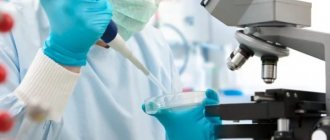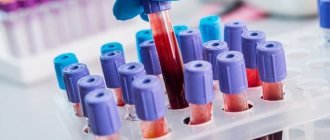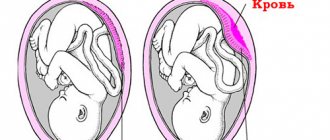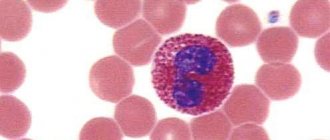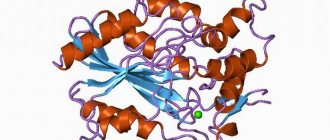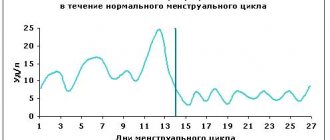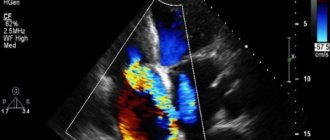Creatinine in urine - what is it?
An experienced and qualified doctor can assume the presence of a particular pathology based on creatinine levels. The indicator is especially important for diagnosing renal failure . Patients who are at risk (for example, diabetics) are recommended to periodically test urine to determine creatinine clearance .
Creatinine is understood as the residual nitrogenous component, the final protein metabolic product. It is formed after muscle contraction from creatine phosphate. Also, small amounts of this element are synthesized in brain structures. It is utilized by the kidneys. Analysis of the content of this substance in urine indicates how well the excretory system of the kidneys functions. If the organ is functioning fully, the nitrogenous substance is present in very small quantities. Concentration depends on muscle activity and volume.
How to get tested correctly
In order to obtain reliable information on indicators of normal or elevated levels of creatinine in the urine, appropriate tests are prescribed. Based on their results, we can accurately say what condition the kidneys are in. To ensure that the results are as accurate as possible, you should prepare for the study. It is advisable to start 1.5 - 2 days before the appointed day.
The required preparation measures are, first of all, the reduction of foods containing a lot of protein. The recommended daily intake is 150 - 200 g. Active exercises and strength load should be kept to a minimum. Only on the recommendation of a specialist can you stop using medications that contain cortisol or thyroxine.
Eating before the analysis is prohibited, namely, the last meal should be earlier than 9 hours before the scheduled delivery time. The daily allowance is placed in a plastic container - clean and dried. The volume should be in the range of 4 to 5 liters.
There are certain rules that must be strictly followed:
- collection begins with the second emptying from the time the person woke up;
- the container should only be stored in the refrigerator or other cool place;
- all portions must be full;
- You should drink a lot of clean water, avoid drinking coffee drinks and sweet juices;
- the very last portion is for the next morning;
- When emptying, you should ensure the cleanliness of the procedure, and for this you need to follow basic rules of personal hygiene.
If a woman is menstruating, it is recommended to postpone the due date.
Creatinine in urine is normal
There is a normal level of creatinine in urine. The permissible concentration depends on age and gender. For children under one year of age, the norm is 8-20 mg/day, from one to 12 years old – 8-22 mg/day. For adolescents, the optimal value is 8-30 mg/day. In older people, there is a tendency for clearance to decrease. The standards for women and men are given in the table below.
| Floor | Standard in daily urine, mg/day |
| Men | from 14 to 26 |
| Women | from 11 to 20 |
What indicators are the norm?
Since creatinine is found in the muscles, the more of them, the higher the creatinine norm; therefore, for the male half of the population, normal values differ from those for women .
If creatinine levels deviate from the norm, then, as in the case of increased urea in the urine, this indicates a pathological process in the human body. The normal amount of this substance is presented in the table.
Another important indicator that affects creatinine levels is nutrition :
- in people who often eat meat, creatinine is higher than in those who eat meat in moderation;
- Vegetarians do not receive animal protein and therefore their creatinine levels are lower.
If a person has only one kidney, then the creatinine level will be higher than those who have two organs. If creatine levels reach 200 micromol per liter , then doctors diagnose kidney failure.
The creatinine test should not be confused with its predecessor called creatine. The amount of creatine in urine in an adult is small and may also depend on nutrition or physiological structure.
Reasons for the increase
Doctors identify a number of reasons for the increase in creatinine content in urine:
- Infectious and inflammatory kidney diseases.
- Hypothyroidism.
- Disturbances in the functioning of the pituitary system.
- Kidney damage.
- Vitamin E deficiency in the body.
- Diabetes.
- Thyroid gland deficiency.
- Eating large amounts of meat.
- The process of bone fusion.
- Crash syndrome.
- Intense and prolonged physical activity.
- Severe burn.
- Abuse of certain drugs.
How to treat deviation of creatinine from normal?
Reduced or increased creatinine and urea in the blood is not a disease, but only indicates problems in the body. Doctors can prescribe treatment only for the pathology - the cause that caused changes in the indicators in the tests. In case of pathologies, the patient is hospitalized and undergoes dialysis against the background of drug treatment. If the reasons are natural, they adjust the diet and change physical activity.
We invite you to read the Instructions for use of Imudon®
In case of renal failure, treatment is aimed at restoring hormonal balance, unloading the renal system and normalizing protein metabolism.
Symptoms
Creatinine is a slightly toxic compound . Its slight increase in urine usually does not cause any symptoms. But in case of renal pathologies, diseases of other internal organs, the concentration of this substance can exceed the standard by 10 times or more. In this case, the patient begins to complain about the appearance of the following characteristic signs:
- Headache.
- Pain syndrome in the kidney area.
- Fast fatiguability.
- Reduced urine production.
- Cramps.
- Unpleasant taste in the mouth.
- Dyspnea.
- Renal edema.
- Unstable blood pressure.
Diagnostics
Based on creatinine levels, a doctor can diagnose a disease or suggest the presence of disorders. Studying urine for creatinine is part of a comprehensive study. If the value exceeds the norm, this means that the kidneys are working hard and the filtration rate has increased. Therefore, the doctor prescribes an examination of a number of organs that fall under risk factors.
As a rule, to identify the content of the residual nitrogenous component, the patient is asked to take:
- 24-hour urine for general analysis.
- Urine for Reberg's test.
- Blood for biochemical testing.
An ultrasound examination may also be prescribed . Based on the diagnostic results, the doctor makes a conclusion about the rate of excretion of metabolic products by the kidneys and the state of the organ’s functioning. He also selects an effective treatment regimen.
General information
Creatinine is formed in muscle tissue during the breakdown of creatine phosphate and creatine. Their metabolism is carried out regularly and stably, as a result of which muscle fibers receive the energy necessary for functioning (contraction). Creatinine then travels to the kidneys, where it is filtered and excreted in the urine. At the same time, its reabsorption in the renal tubules (reabsorption) is minimal.
In the case of normal functioning of the glomeruli of the kidneys, the body maintains a safe and stable level of creatinine. As the child grows and develops, creatinine increases, which is due to high energy costs for the formation of muscle tissue. Also for men, the norm for this indicator is higher, since physiologically their body requires more energy to increase muscle area.
If the concentration of creatinine changes sharply, then a disorder of the kidneys and urinary system should be suspected. In addition, deviations from the norm may indicate malnutrition, the development of cancer and autoimmune processes, and infection. Therefore, to obtain a reliable picture of the disease and determine a specific pathology, a comprehensive study of creatinine (in the blood and in the urine at the same time) is carried out - the Rehberg test.
Treatment
To combat high creatinine in medicine, different methods are used:
- Medication.
- Folk.
- Diet therapy.
The choice of a specific option depends on the type of disease that caused an increase in the concentration of this substance in urine. If the cause is renal pathology, a comprehensive treatment regimen is drawn up, which includes drug therapy and diet. The patient should limit intake of protein, meat products, and salt.
It is also necessary to normalize the water balance . To do this, the doctor recommends taking a certain amount of fluid per day according to the degree of kidney function. Medicines are prescribed that normalize protein metabolism and remove toxins. For example, Reogluman , Lespefan , Ketosteril and Sorbilact . It is useful to monitor not only your diet and water consumption, but also your physical activity. If the patient's condition is severe, hospitalization is required. A special procedure is performed to cleanse the blood of toxins - hemodialysis.
If the cause of high creatinine is diabetes mellitus, then blood glucose adjustment . Constant monitoring of glycemic levels is indicated. For myasthenia gravis, long-term therapy with potassium and kalamine preparations is recommended. Treatment for rheumatoid arthritis involves taking antibiotics and corticosteroid medications.
Traditional medicine offers various methods for reducing creatinine in urine. For example, rice water, herbal infusions and tinctures help well. Osmotherapy is also an effective and interesting method of treating the disease . This method came from China. Its essence lies in the use of medicinal baths, which have a positive effect on blood circulation and kidney function.
Causes of low creatinine levels
If, as a result of the analysis, you received an indicator that does not reach the lower limit of normal in men or women, then the development of the following pathologies can be suspected:
- Kidney disease: The most common cause of low creatinine levels in urine. An infectious or autoimmune process affecting the kidney parenchyma reduces the number of nephrons that carry out the filtration process. As a result, creatinine in the urine and creatinine clearance decrease, and creatinine in the blood increases. Such diseases include chronic glomerulonephritis, pyelonephritis, and renal amyloidosis. Narrowing of the renal arteries leads to a decrease in the glomerular filtration rate and ischemia of the kidney tissue, which is also manifested by a low level of creatinine in the urine. During the examination, a determination of the ratio of albumin and creatinine in urine should be prescribed to identify damage to the glomeruli of the kidneys;
- Pathologies of muscle tissue: with a decrease in muscle mass or during the development of an inflammatory process in them, creatinine in the urine decreases. Observed in muscular dystrophies, myositis;
- Hyperthyroidism: increased thyroid function is characterized by changes in a number of biochemical parameters, one of which is a decrease in creatinine in daily urine;
- Cancers of the blood;
It should also be noted that a decrease in creatinine in urine occurs with a vegetarian diet and insufficient protein intake from food.
Diet for high creatinine
With a slight increase in creatinine levels, a special diet can help improve the situation. Its principles are as follows:
- Limit animal protein to 40-60 grams per day.
- Exclusion from the menu of foods that irritate the kidneys (chocolate, cocoa, hot spices, strong tea and coffee, alcoholic drinks, broths).
- Limit or completely eliminate salt.
- Fortifying your diet by consuming raw fruits and vegetables.
- The drinking regime should be 800-1000 ml of water per day.
- It is better to replace sugar with fruit, and wholemeal bread with bran.
- Include fatty fish, dairy products, complex carbohydrates and vegetable oils in your menu.
- Beef, lamb and pork fats are prohibited.
How to properly collect daily urine?
First, the patient receives a collection container and advice on the rules from the laboratory department. For this analysis, a regular container without preservative is provided.
Then the patient independently begins to collect biomaterial within 24 hours. Important: urine after waking up on the first day is not collected, morning urine is collected the next day.
The patient records the time of collection, and at the end - the approximate volume of daily diuresis. On average, a healthy person's urine volume per day ranges from 800 ml to 1.5 liters. Based on this information, the patient can independently navigate the approximate volume. You should also take into account the amount of fluid consumed per day.
During breaks between collections, the container is stored in the refrigerator at a temperature of no more than 10 ° C. The container should be delivered to the laboratory the next day no later than 3 to 4 hours after the last collection.
The patient is strictly prohibited from:
- use homemade jars for biomaterial;
- store the container in the freezer;
- leave the container open for a long time;
- neglect the rules of preparation;
- deliver the biomaterial to the laboratory later than 4 hours.
Certified specialist, in 2014 she graduated with honors from the Orenburg State University with a degree in microbiologist. Graduate of the graduate school of the Federal State Budgetary Educational Institution of Higher Education Orenburg State Agrarian University.
In 2020 At the Institute of Cellular and Intracellular Symbiosis of the Ural Branch of the Russian Academy of Sciences, she completed advanced training in the additional professional program “Bacteriology”.
Laureate of the All-Russian competition for the best scientific work in the “Biological Sciences” category 2020.
